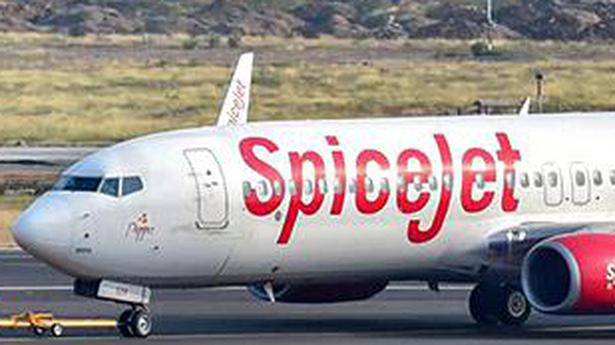
The SpiceJet ‘accident’
The Hindu
What are the factors that might have caused the flight to experience severe turbulence? What about adverse weather?
The story so far: On the evening of May 1, a Boeing 737-800 aircraft of low-cost private carrier SpiceJet, on a scheduled flight (SG-945) operating from Mumbai to Andal (Durgapur, West Bengal) with 195 passengers on board (189 passengers and six crew), experienced severe turbulence, at around 16,000 feet, while on approach to the destination airport.
Due to severe turbulence, nearly 17 passengers suffered head, shoulder, spinal, forehead and facial injuries that were serious enough to warrant hospitalisation. The aircraft too experienced damage in the cabin. Visuals showed oxygen mask compartments open, sections of the cabin ceiling having come apart exposing ducts, damage to some seat handrests and the cabin being in a state of disarray, with items from the galley as well as passenger belongings strewn around. The flight crew took manual control of the aircraft (from autopilot mode) and the aircraft made a safe landing about 20 minutes later.
A preliminary report by India’s civil aviation regulatory body, the Directorate General of Civil Aviation (DGCA), categorised it as an “accident”. It said: “... the vertical load factor [which is related to aviation] varied from 2.64G and minus 1.36G, and during this period, the autopilot got disengaged for two minutes....” In addition, there were speed variations. The crew have been off rostered. The airline’s aircraft maintenance engineer who released the aircraft from Durgapur (the plane was flown from Andal to Kolkata later) has also been derostered. The aircraft has been grounded and the DGCA has ordered a full inspection of the SpiceJet aircraft fleet.
The occurrence would fall under one of the conditions that defines an “accident” in aviation, i.e., “an occurrence associated with the operation of aircraft which ... i) in the case of a manned aircraft, takes place between the time any person boards the aircraft until such time as all such persons have disembarked.... a) a person is fatally injured or seriously injured as a result of: i) being in the aircraft ii) direct contact with any part of the aircraft including parts of which have become detached from the aircraft....”
India’s Aircraft Accident Investigation Bureau (AAIB), has taken over investigation into the occurrence. The AAIB is responsible for “classification of safety occurrences” that involve aircraft operating in Indian airspace falling under the categories ‘accidents’, ‘serious incidents’ and ‘incidents’. The AAIB says it investigates any ‘accident’ and ‘serious incident’ involving aircraft having what is called an ‘all up weight (AUW) of more than 2,250 kg’.
A pilot says air turbulence can be graded as light, moderate, severe and extreme. In the last classification, there may be even structural damage and possible loss of aircraft control. In terms of the categorisation of turbulence, there is (in general): convective turbulence (or turbulence linked to cloud convection); mechanical turbulence (low-level turbulence); orographic turbulence (linked to elevated terrain such as mountains); clear air turbulence; low-level jet streams, and also wake turbulence caused by other aircraft.
In a tweet, Madhavan Rajeevan, former Secretary, Ministry of Earth Sciences, who has “research interests on monsoons” has said: “In my understanding Spice jet has their own weather forecasting team for their planning. They don’t take [the] services of [the] IMD [India Meteorological Department]. All airlines should take weather services very seriously for their operations....”













